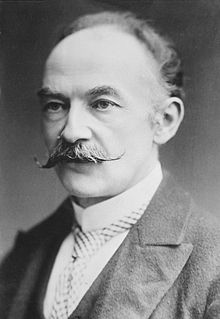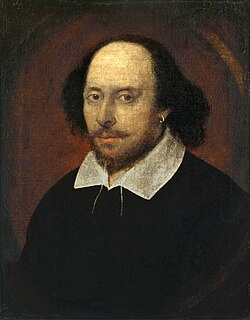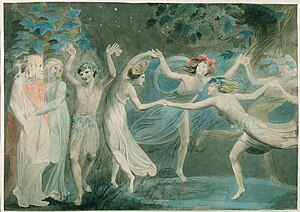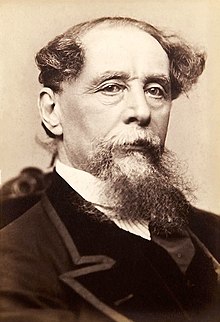The lady with the Dog
>> Plot
Dmitri Gurov is a Moscow bank worker, married with a daughter and two sons. Unhappy in his marriage, he is frequently unfaithful and considers women to be of "a lower race". While vacationing in Yalta, he sees a young lady walking along the seafront with her small dog, and endeavors to make her acquaintance. The lady, Anna Sergeyevna, is also vacationing, while her husband remains at home in an unnamed provincial town. They are soon engaged in an affair, and spend most of their time together walking and taking drives to nearby Oreanda. Though she is expecting her husband to come to Yalta, he eventually sends for her to come home, saying that something is wrong with his eyes. Gurov sees her off at the station.
Returning to Moscow and his daily routine, working by day and clubbing by night, Gurov expects to soon forget young Anna but finds he is haunted by her memory. On the ruse of going to St. Petersburg to take care of some business, he sets off to her town to find her. Learning the location of the family’s residence from a hotel porter, he finds the house, only to realize that it would be futile to intrude. In despair, he reasons that Anna has probably forgotten him and found someone else, and heads back to his hotel for a long nap.
In the evening, he remembers having seen a sign earlier promoting a performance of The Geisha. Reasoning that Anna and her husband may attend the first performance, he goes to the theater. The couple enters and he watches intently. When the husband goes out for a smoke during the first interval, Gurov greets Anna, who is bewildered and runs from him. After following her through the theater, he confronts her and she confides that she has been thinking of him constantly. Frightened, she begs him to leave and promises to come to see him in Moscow.
She makes excuses to come to Moscow, telling her husband that she is going there to see a doctor, which he "believes and does not believe". Gurov realizes that for the first time in his life he has actually fallen in love, and wonders how they can continue. While they talk of finding a plan, the story ends without a resolution
>> Anton Pavlovich Chekhov
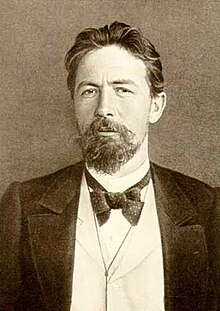 Anton Pavlovich Chekhov ( 29 January 1860 – 15 July 1904) was a Russian playwright and short story writer who is considered to be among the greatest writers of short fiction in history. His career as a playwright produced four classics and his best short stories are held in high esteem by writers and critics. Along with Henrik Ibsen and August Strindberg, Chekhov is often referred to as one of the three seminal figures in the birth of early modernism in the theater. Chekhov practiced as a medical doctor throughout most of his literary career: "Medicine is my lawful wife", he once said, "and literature is my mistress."
Anton Pavlovich Chekhov ( 29 January 1860 – 15 July 1904) was a Russian playwright and short story writer who is considered to be among the greatest writers of short fiction in history. His career as a playwright produced four classics and his best short stories are held in high esteem by writers and critics. Along with Henrik Ibsen and August Strindberg, Chekhov is often referred to as one of the three seminal figures in the birth of early modernism in the theater. Chekhov practiced as a medical doctor throughout most of his literary career: "Medicine is my lawful wife", he once said, "and literature is my mistress."James Madison
Madison inherited his plantation Montpelier in Virginia and owned hundreds of slaves during his lifetime. He served as both a member of the Virginia House of Delegates and as a member of the Continental Congress prior to the Constitutional Convention. After the Convention, he became one of the leaders in the movement to ratify it, both nationally and in Virginia. His collaboration with Alexander Hamilton and John Jay produced The Federalist Papers, among the most important treatises in support of the Constitution. Madison changed his political views during his life. During deliberations on the constitution, he favored a strong national government, but later preferred stronger state governments, before settling between the two extremes late in his life.
WASP
Scholars agree that the group's influence has waned since the end of World War II, with the growing influence of other ethnic groups in the United States. The term is also used in Australia and Canada for similar elites. The term is occasionally used by sociologists to include all Americans of North European ancestry regardless of their class or power. People rarely call themselves WASPs, except humorously. The acronym is typically used by non-WASPs.
Narration
>> Narrative point of view: the perspective (or type of personal or non-personal "lens") through which a story is communicated
>> Narrative voice: the format (or type presentational form) through which a story is communicated
>> Narrative time: the placement of the story's time-frame in the past, the present, or the future
A narrator is a personal character or a non-personal voice that the creator of the story develops to deliver information to the audience, particularly about the plot. The narrator may be a voice devised by the author as an anonymous, non-personal, or stand-alone entity; as the author herself/himself as a character; or as some other fictional or non-fictional character appearing and participating within their own story. The narrator is considered participant if he/she is a character within the story, and non-participant if he/she is an implied character or an omniscient or semi-omniscient being or voice that merely relates the story to the audience without being involved in the actual events. Some stories have multiple narrators to illustrate the storylines of various characters at the same, similar, or different times, thus allowing a more complex, non-singular point of view.
Narration encompasses not only who tells the story, but also how the story is told (for example, by using stream of consciousness or unreliable narration). In traditional literary narratives (such as novels, short stories, and memoirs), narration is a required story element; in other types of (chiefly non-literary) narratives, such as plays, television shows, video games, and films, narration is merely optional.
*3C: Computer + Communication + Consumer Electronics
The Reader
Michael discovers that Hanna loves being read to and their physical relationship deepens. Hanna is enthralled as Michael reads to her from "The Odyssey," "Huck Finn," and "The Lady with the Little Dog." Despite their intense bond, Hanna mysteriously disappears one day and Michael is left confused and heartbroken.
Eight years later, while Michael is a law student observing the Nazi war crime trials, he is stunned to find Hanna back in his life this time as a defendant in the courtroom. As Hanna's past is revealed, Michael uncovers a deep secret that will impact both of their lives.
"The Reader" is a haunting story about truth and reconciliation, about how one generation comes to terms with the crimes of another.
Literacy
The key to all literacy is reading development, a progression of skills that begins with the ability to understand spoken words and decode written words, and culminates in the deep understanding of text. Reading development involves a range of complex language underpinnings including awareness of speech sounds (phonology), spelling patterns (orthography), word meaning (semantics), grammar (syntax) and patterns of word formation (morphology), all of which provide a necessary platform for reading fluency and comprehension.

